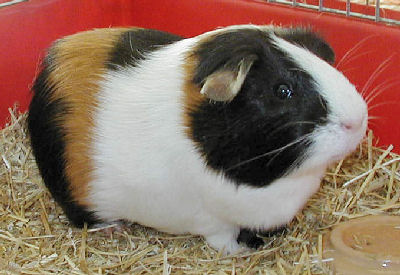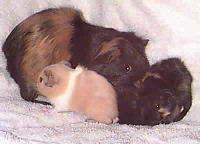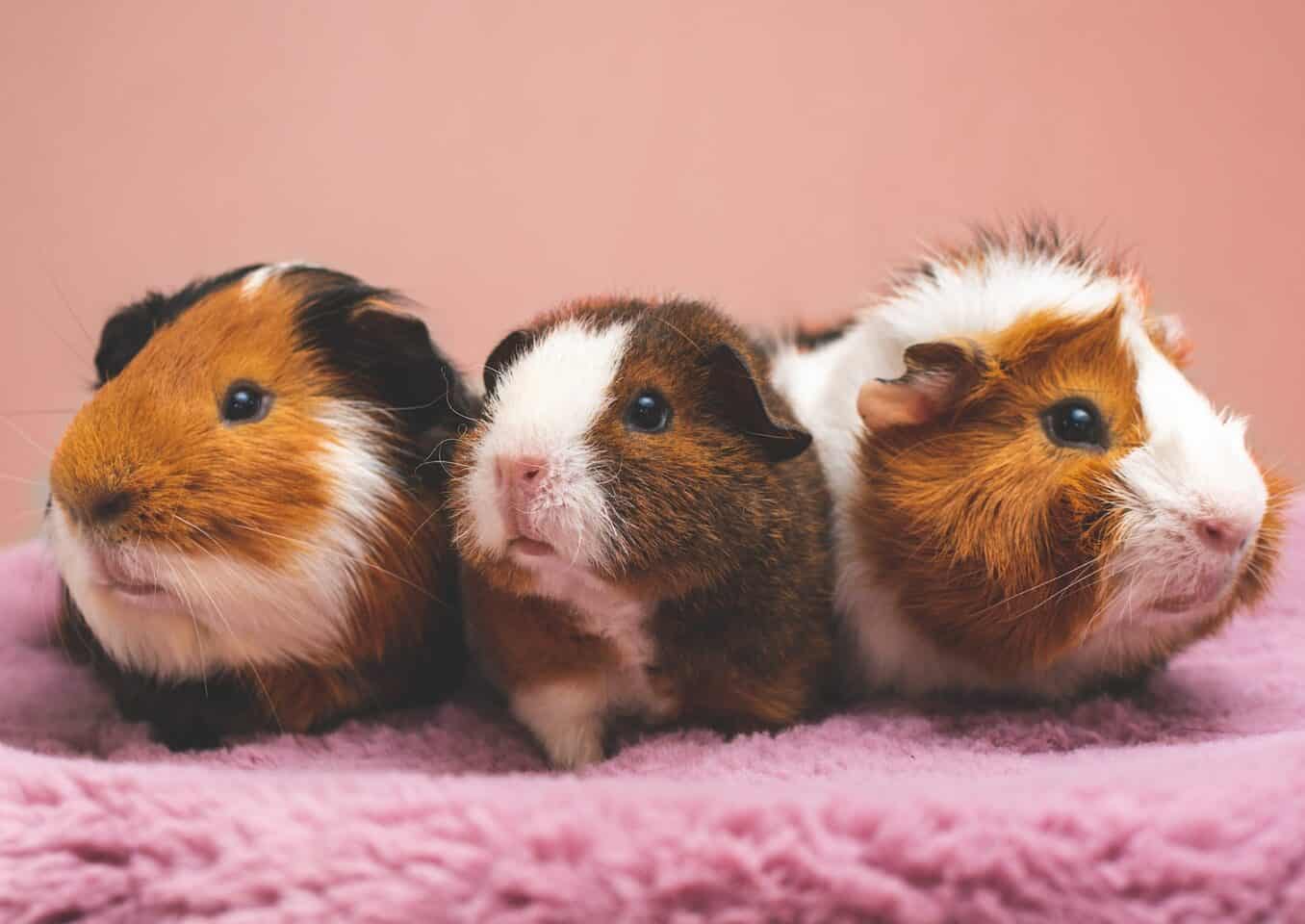
The fabulous docile “Guinea Pig” is neither a pig nor is it from Guinea!
The Guinea pigs we have as pets today are descendents of the Tschudi Guinea Pig from South America. Guinea pigs make great pets and they very rarely bite. They are inexpensive and have lovable personalities. Guinea Pigs can live 8 to 10 years and are easy to house and feed. They also tend to be hardy little animals and don’t contract diseases very easily.
These are relatively small animals, though through selective breeding a variety of different strains of have been developed. Guinea pigs come in sizes ranging from pets as small as a rat up to pets as big as a small dog. They also come in a variety of colors and hair styles.
The American Guinea Pig is the most common breed of Guinea pig!
If you’re looking for a pet with a sweet and clownish personality that is easy to care for, the American Guinea Pig fits that description perfectly. Americans are quite entertaining, and they respond well to handling. They also tend to get along well with other Guinea pigs.
One reason that American Guinea Pigs are so popular is because they’re easy to care for. Their short hair requires minimal maintenance, as its hair does not mat easily and they do a good job of keeping themselves clean. This makes them a good choice for a child’s pet.
SeeBaby Guinea Pigsbelow!
- Kingdom: Animalia
- Phylum: Chordata
- Class: Mammalia
- Order: Rodentia
- Family: Caviidae
- Genus: Cavia
- Species: porcellus
Background:
The American is the oldest breed of Guinea pig. It is believed to have been first domesticated around 5000 BC in the Andes. It wasn’t until the 1500s that humans began to selectively breed Guinea pigs, creating several different varieties. The short-haired breed was originally known as the English Guinea Pig, and in some countries it is still called by that name. The American Cavy Breeders Association began calling them Americans in the 1960s.
Description:
The American has a short, smooth coat. It has no curl and can come in a variety of colors. The American Satin is identical to the American, except its coat is fine, dense and extra shiny. It is a newer breed, only recently having gained recognition from the ACBA.
Color differences:
The American Guinea Pig can be found in a wide variety of colors and patterns, and any of the nineteen Guinea pig colors are acceptable for showing. Satins are normally found in Self (single color), although they may also sport various patterns
Keeping Guinea Pigs:
Be sure to provide your guinea pig with a good home and a proper diet. This will keep it happy and healthy and ensure a great pet for a long time.
Guinea pigs need plenty of exercise and they also love to play. You can let them outside or run around in the house for short periods of time under supervision. They love to explore and need at least one hour of supervised ‘floor time’ every day.
When picking up a guinea pig make sure you do not grab it only by its shoulders. Just keep in mind when picking your pet up to do it evenly. With your hands, support it’s entire body, and be careful not to drop it.
Guinea pigs are social creatures and will like to have a companion. They are great companions for children.
Availability/Purchasing your Guinea Pig:
| Guinea Pig Babies! |
|---|
 Two short-haired babies and one rosette Two short-haired babies and one rosette |
 “Molly”, “Independence”, and “Dawn” Born on the 4th of July! |
 This guinea pig mother had four babies! |
American Guinea Pigs are easily found and prices are usually around $20. Guinea Pigs come in many varieties and are readily available at pet stores, shelters, and rescues. When looking to acquire a pet guinea pig make sure it is a healthy animal. A healthy guinea pig will have brilliant eyes, good sound teeth, and a healthy coat. Any age and either sex will make a good pet, however you should plan to get more than one as they are very social and do best with a companion. Get a same sex pair or you could end up having babies.
References
Sandler, Carol, “Cavy Standard Changes- The First 25 Years“, American Cavy Breeders Association, Copyright 2003
“Satin“, Omlet, Copyright 2004
“Guinea Pig Breeds“,Wikipedia, Copyright 2008
“Guinea Pig“,Wikipedia, Copyright 2008
Featured Image Credit: Jaroslaw Slodkiewicz, Unsplash
